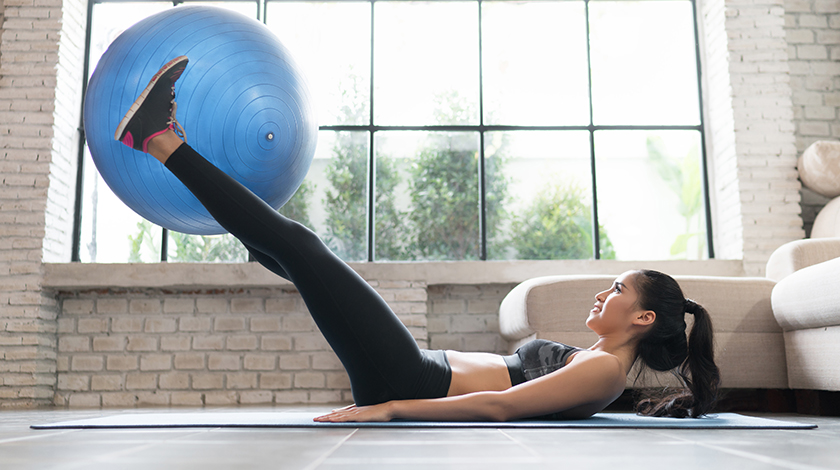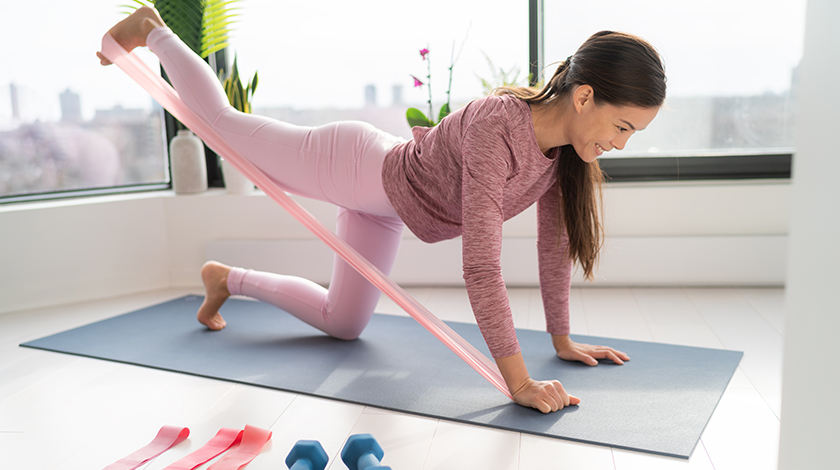Gym closure is no excuse for you to skip your daily workout routine. There are many simple bodyweight exercises such as burpees, jump squats, lunges and planks that you can try at home to stay active. You can also work out with your friend or a group through video calls to stay motivated while practising social distancing.
Here are a few home gym equipment that you can get to achieve your fitness goal:
- Yoga mat
Yoga mat is not just for yoga practice! It is the most simple and useful equipment that provides a cushioned, non-slip surface for you to perform a variety of floor workout such as core training, push-ups and squats.
- Resistance bands
It is a fact that you can use resistance bands for a full-body strength training. No dumbbells? No problem. You can do biceps curl by looping resistance bands around a pillar or bedpost at home. Resistance bands are also great for warm-up movements.
- Exercise ball
This bouncy balance ball is a great equipment to help improve your stability and strengthen your core. Use the ball with the mat to perform core movements such as the jackknife ab workout and V-pass.

- Yoga block
In the absence of an instructor, this will be handy during the home practice for yoga enthusiasts to reach the difficult positions and improve their flexibility
- Dumbbells
Dumbbells are versatile equipment to hit a full-body workout. Pick a weight that allows you to complete all the reps without losing your form.
- Foam roller
Do not forget to cool down after your workout with a foam roller. Get a textured muscle foam roller for a deep tissue massage to help with muscle recovery and pain relief.
Can’t wait to start your workout plan? Hold on, there are a few more things you need to know when working out at home. Check out the tips below for an injury-free, effective and enjoyable workout experience at home.
- Create a fitness space
Despite limited space at home, a designated area suitable for home workouts is essential. Avoid muscle injuries due to improper form or inappropriate workout environments, such as doing abs workouts on the bed or the hard floor.
- Schedule time to train
It may seem convenient to work out at home, but it can also make you less disciplined. Be sure to schedule time to train to make exercising a part of your daily routine and a habit that you will stick to.
- Warming up and cooling down
Working out at home may also put much pressure on your body like working out at the gym, such as intense HIIT. Remember to do a warm-up before your training and a cool down at the end to help your body prepare for the exercise and recover afterwards.
- Focus on your form
It is important to be aware of your form when the coach is not here to watch and correct you. Improper form could lead to injury and body pain in the long run. Try doing the exercise in front of the mirror to ensure you’re performing it correctly.
- Diversify your workout
Try a diversified home workout with a variety of gym equipment. Improve your cardiopulmonary function with aerobic exercises, strengthen your muscle with weight training, enhance muscle elasticity with stretching exercises, improve flexibility with balancing exercised and so on. A diversified workout plan does not only improve your physical fitness on the whole but can help you avoid injuries caused by over-exercising by doing the same type of training.
- Go at your own pace
One of the biggest advantages of working out at home is that you can train at your own level and pace. Set realistic fitness goals and challenge your body gradually. Persist and you will progress towards your goals in the long run.

